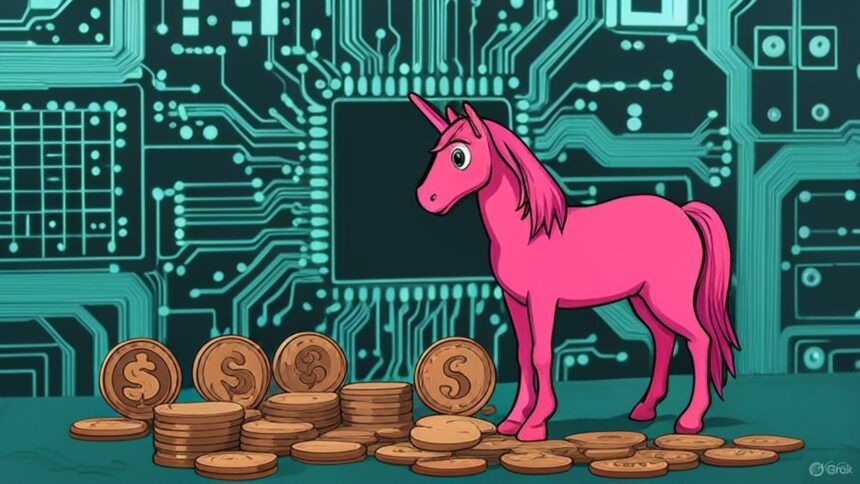The Uniswap Foundation, the organization that coordinates the development, funding, and governance of Uniswap, has submitted a proposal to change the incentive structure of the largest decentralized exchange (DEX) in the Ethereum ecosystem.
In this approach, Changing economic models Payment of fees It is determined through the use of UNI tokens and voted on by those involved in the governance of the DEX.
This initiative focuses on enabling fee collection at the protocol level. Establish an automatic mechanism for writing UNI tokens. “Burning” a token permanently removes it from circulation.
As explained, this mechanism is activated Every time a protocol generates incomeThis directly links the use of Uniswap to a planned reduction in the supply of UNI.
Economic model based on planned supply reductions
Currently, the fees paid on Uniswap are: Diversified only between liquidity providersThat is, a user who deposits a pair of tokens in a protocol contract to facilitate exchange.
The new scheme proposes that a portion of these fees become part of the UNI burn mechanism. When this mechanism is activated, A formal vote is required, but The DEX commission “switch” (the button that enables the collection of fees to the protocol) is managed by governance.
The Uniswap Foundation plans to activate fee collection in a specific set of markets within the version 2 contract and version 3 of the protocol.
In version 2, the changes are direct. The total fee will remain at 0.3%, but the allocation will change. Liquidity providers receive 0.25%; The remaining 0.05% goes to the UNI write mechanism..
In version 3, the structure is different as each market has its own commission level.
For pairs operating at rates of 0.01% and 0.05%, the protocol reserves a portion equal to 25% of the amount received by the liquidity provider. In other words, if a supplier earns 1 unit of commission; With this protocol, writing a UNI takes a quarter of its units..
In markets with higher rates of 0.30% to 1%, the percentage allocated to the protocol is lower, equivalent to one-sixth of what liquidity providers get.
The purpose is that protocol fees Adapt to your commission level (Fee) Select for each pairmaintaining consistency between markets.
Furthermore, the Foundation proposes that in the future these parameters can be adjusted through simplified voting so that the protocol can respond more quickly to changes in the market and its operations.
The following diagram summarizes the implementation schedule for the proposed changes. What’s already been done, what’s being voted on today, and what’s in development
New revenue sources and mechanisms to burn UNI
This proposal adds several ways to promote UNI combustion.
On the other hand, it incorporates fees for the Unichain network sequencer, a system that orders transactions and generates its own income. After bearing the costs and distributing the corresponding portion to Optimism, the rest goes directly to token destruction.
On the other hand, if we introduce an auction, Operate without paying protocol fees for a limited time. The person who wins the bid will pay the offer and the entire amount will be allocated to the burning of UNI.
This allows the protocol to exploit the order of transactions to capture value that was previously left in the hands of the operator.
Added to this is the use of “hooks”, which are modules that integrate liquidity from other protocols. The same write scheme is applied to these volumesturning Uniswap into an access point to various liquidity sources.
To close the package, It is proposed to destroy 100 million UNI from the Protocol Ministry of Financeas an adjustment for fees not collected since the token’s inception.
How will Uniswap’s new economic proposal work?
At a technical level, the system is supported by two smart contracts. TokenJar and Firepit. There are two technical components that manage the Uniswap commission switch.
TokenJar receives commissions from various sources (DEX versions, networks, aggregators) and stores them immutably. To withdraw these funds, you will need to burn UNI tokens in Firepit.
both contracts These are already implemented in versions 2 and 3 of Uniswap.the same is true for Unichain. The remaining components will be introduced through future governance proposals.
Restructuring operations in the Uniswap ecosystem
Finally, the proposal reorganizes the operational structure of the Uniswap ecosystem.
The Uniswap Foundation operating team will be integrated into Uniswap Labs (the organization responsible for the evolution of the DEX) and will waive fees on interfaces, wallets, and APIs (application programming interfaces) to focus on development and attract more activity to the DEX.
The Uniswap Foundation will maintain its governance and coordinating role.
The funding will be structured as follows: 20 million UNI will be allocated annually from 2026released quarterly and overseen by an independent committee based on an agreement between the Institute and UNI governance.
In summary, the plan combines protocolized fees, token writing, and a new operational structure, but its implementation will depend on community votes.
(Tag translation) Blockchain


